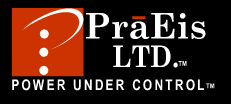|
|
|
|
|
|
|
|
||||||||||||||||||||||||||||||||||||||||||||||||||||||||||||||||||||||||||||||||||||||||||||||||||
|
|
|
 |
 |
| MACT Boiler Standards - Summary | ||||||||||||||||||||||||||||||||||||||||||||||||||||||||||||||||
|
Final
rule affects: Industrial boilers, institutional and commercial
boilers and process heaters. If you own or operate a boiler/ process heater
located at a major source, you fall under compliance. |
||||||||||||||||||||||||||||||||||||||||||||||||||||||||||||||||
|
Sources (defined): |
||||||||||||||||||||||||||||||||||||||||||||||||||||||||||||||||
|
|
||||||||||||||||||||||||||||||||||||||||||||||||||||||||||||||||
|
4 categories of HAP (Hazardous Air Pollutants) |
||||||||||||||||||||||||||||||||||||||||||||||||||||||||||||||||
|
|
||||||||||||||||||||||||||||||||||||||||||||||||||||||||||||||||
|
||||||||||||||||||||||||||||||||||||||||||||||||||||||||||||||||
|
Opacity Limits: |
||||||||||||||||||||||||||||||||||||||||||||||||||||||||||||||||
|
|
||||||||||||||||||||||||||||||||||||||||||||||||||||||||||||||||
|
3-years for compliance |
||||||||||||||||||||||||||||||||||||||||||||||||||||||||||||||||
|
|
||||||||||||||||||||||||||||||||||||||||||||||||||||||||||||||||
| www.epa.gov/airlinks/airlinks3.html | ||||||||||||||||||||||||||||||||||||||||||||||||||||||||||||||||
| The 'Clear Skies' Initiative vs. The Clean Power Act | |||||||||||||||||||||||||||||||
|
|||||||||||||||||||||||||||||||
|
The
Clean Power and Clean Smokestacks Acts cut power plants' toxic mercury
pollution to 5 tons per year by 2008. |
||
|
The Bush administration plan delays any mercury reductions to 2010. It allows power plants to spew more than 5 times more mercury pollution each year from 2010 through 2017, and 3 times more mercury emissions every year after. |
||
|
The Clean Power and Clean Smokestacks Acts cut power plants' soot-forming sulfur dioxide (SO2) pollution to 2.25 million tons per year by 2009. |
||
|
The administration plan delays reductions to 2010. It then allows twice as much sulfur pollution each year through 2017, and one third more every year after. |
||
|
The Clean Power and Clean Smokestacks Acts cut power plants' smog-forming nitrogen oxides (NOx) pollution to just over 1.5 million tons per year by 2009. |
||
|
While starting NOx cuts in 2008, the administration plan allows 40% more NOx pollution each year from 2009 through 2017, and 200,000 tons more NOx each year after. |
||
|
The Clean Power and Clean Smokestacks Acts cut carbon dioxide (CO2) pollution to 1990 levels, just over 2 billion tons per year, by 2009. |
||
|
The
administration plan ignores carbon pollution, and would let emissions
of this heat-trapping pollutant keep growing every year. |
||
| PraEis Solutions For Emissions Control | ||
| Click here for a free Cost Analysis Form | ||
| Click here to receive free Emissions Control Updates | ||
 |
6801 Brecksville Rd. Ste. 206
Independence, OH 44131-5042 216-525-0600 216-525-0601 fax |
|